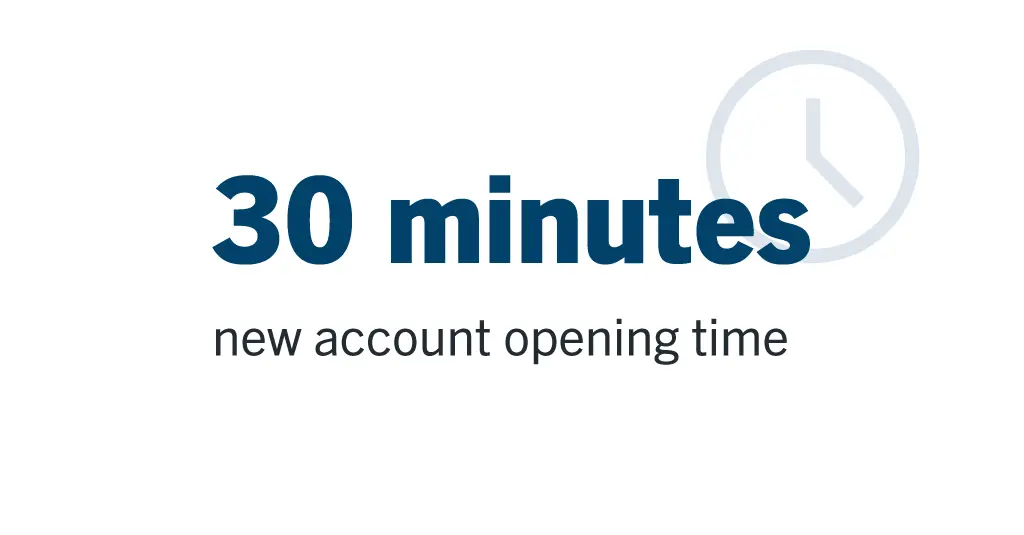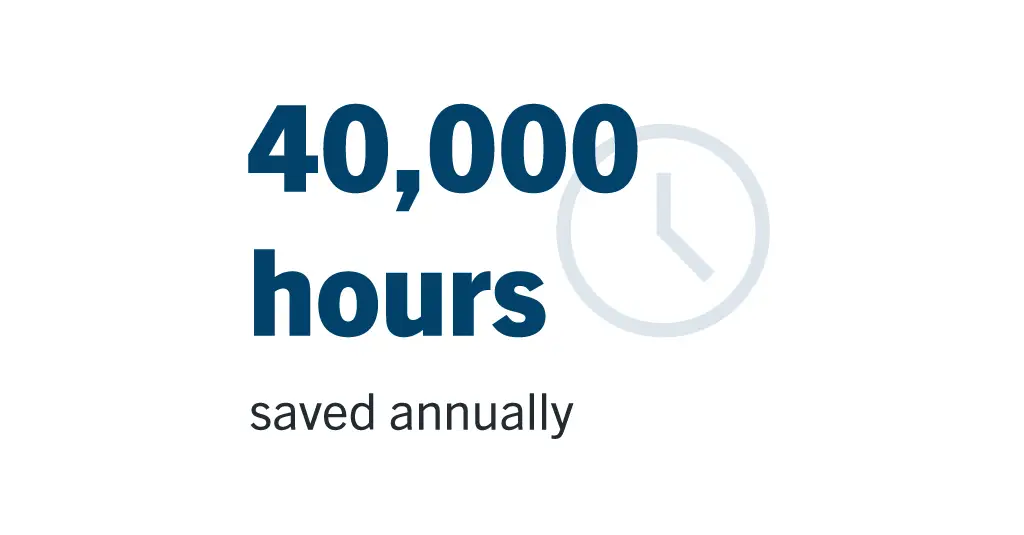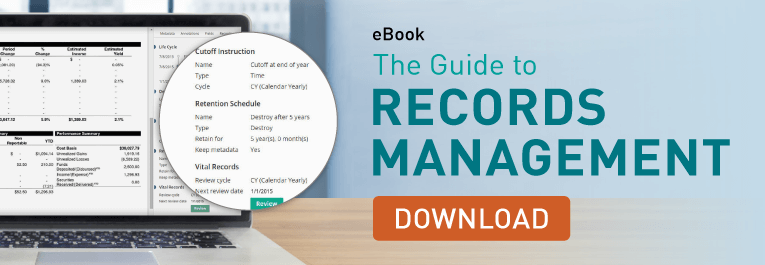SITUATION
• New account opening process depended on paper forms and direct mail
• Legacy new account opening process could take from three to seven days
• Difficulty tracking activities taken on documents resulted in challenges with audit preparation
SOLUTION
• Accelerated new account opening process from one week down to 30 minutes
• Simplified audit preparation
• 40,000 hours of annual time savings
An independent investment advisory firm that provides financial consulting services to more than 4,000 households with approximately $2 billion in assets under management needed a way to expedite client services.
The firm sought out document management technology to automate its new account opening process. The legacy process was paper-based, requiring the firm to prepare stacks of paper forms and individually mail them between advisors, a client service representative, the firm’s cashiering department, the client and the custodian. This typically took three to seven days and often delayed important client transactions.
“New account documents are extremely time sensitive. At times, we would have to interrupt advisors during meetings to get a signature,” said the firm’s IT director. “We were looking for a paperless system with efficient workflow, SEC and FINRA compliance and a strong integration capability.”

Accelerating New Account Opening from a Week to 30 Minutes
After a demonstration of Laserfiche software, the firm’s IT team felt that Laserfiche’s configurable workflow tools could easily address their operational needs.
To automate account opening, the firm integrated Laserfiche with DocuSign, its Tamarac customer relationship management (CRM) system and Laser App. By integrating these systems, client paperwork can be reviewed, signed and finalized in under half an hour:
- Laserfiche pulls the new client contact record from Tamarac CRM and routes it to Laser App.
- Laser App automatically populates an electronic form with the client’s account information.
- The system automatically identifies who should receive the form next and routes it to the client service representative for review.
- The applicable advisors electronically sign the form using DocuSign.
- The custodian and client each receive a copy of the form for final sign-off.
 Compared to the legacy system, this new process has generated a week in time savings. The process is not only quick, but enhances personnel accountability from start to finish.”
Compared to the legacy system, this new process has generated a week in time savings. The process is not only quick, but enhances personnel accountability from start to finish.”
“If a document that requires review sits for more than 24 hours, the system emails a reminder to the responsible person,” said the IT director. “If the same document sits for more than 72 hours, the system emails that person’s boss.”
Creating Comprehensive SEC and FINRA Compliance
Improving operations was only part of the firm’s information management overhaul. The firm also needed comprehensive compliance functionality to meet the strict standards of its industry.
“The SEC and FINRA require that firms use a certain type of document management technology, such as unalterable database software,” said the IT director. “Our research showed that Laserfiche’s technology is not only the most flexible, but also offers the option to use numerous add-on features.”
 One feature that simplifies audit preparation is Laserfiche’s event log capability, which tracks the creation, deletion and modification of documents.”
One feature that simplifies audit preparation is Laserfiche’s event log capability, which tracks the creation, deletion and modification of documents.”
“Our system logs every possible interaction with a document,” said the IT director. “Even if a document is deleted, it is still available in the Laserfiche repository and we can see who modified it.”
The firm’s DocuSign integration also verifies the identity of a document’s signer. Detailed security questions, social security verification and access code protection maintain the integrity of client transactions and prevent fraud.
 “It’s pretty astounding when you consider the time savings,” said the IT director. “We estimate that Laserfiche saves us up to one hour per document. “Given the firm’s estimated average of 165 documents processed per day, Laserfiche produces an annual time savings of roughly 41,415 hours.”
“It’s pretty astounding when you consider the time savings,” said the IT director. “We estimate that Laserfiche saves us up to one hour per document. “Given the firm’s estimated average of 165 documents processed per day, Laserfiche produces an annual time savings of roughly 41,415 hours.”



 SIU also used Laserfiche to expedite the collection of patient information when a local healthcare provider retired. “There was a local practice where the provider retired, and all of their patients were transitioned into our practice,” Washburn explained. “We had to collect release of information notices, so we quickly deployed a Laserfiche form to streamline that process. Our clinical staff just had to enter the patient’s health record number. Our system integrates with our practice management system to pull everything automatically, which significantly reduced the time it would have taken manually.”
SIU also used Laserfiche to expedite the collection of patient information when a local healthcare provider retired. “There was a local practice where the provider retired, and all of their patients were transitioned into our practice,” Washburn explained. “We had to collect release of information notices, so we quickly deployed a Laserfiche form to streamline that process. Our clinical staff just had to enter the patient’s health record number. Our system integrates with our practice management system to pull everything automatically, which significantly reduced the time it would have taken manually.”

